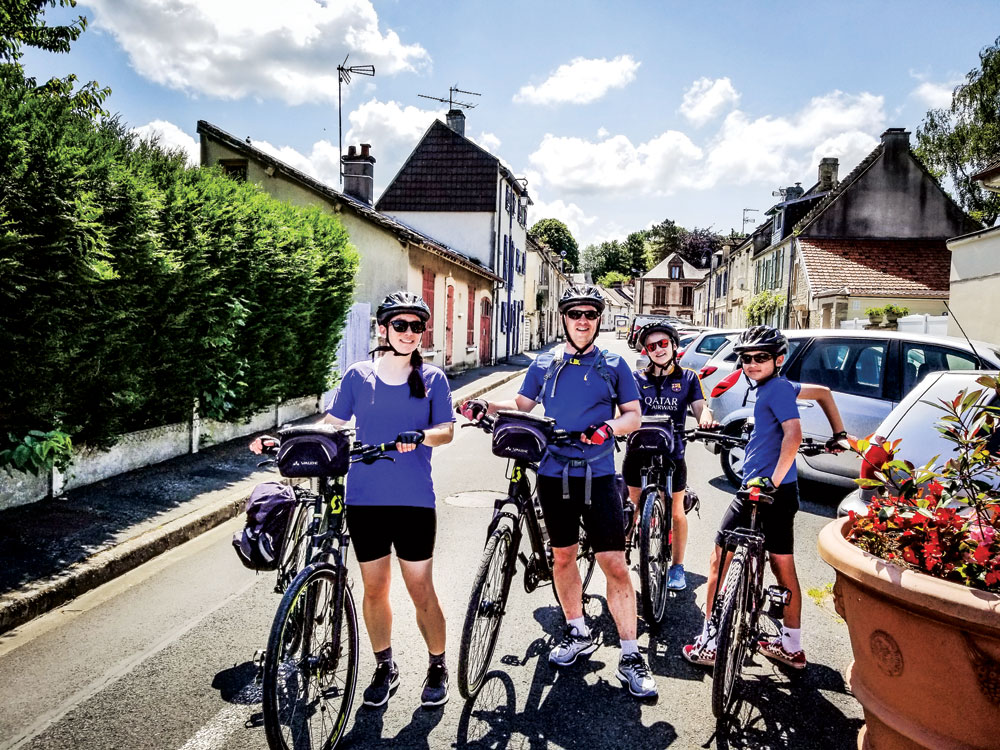
The Goldstein family did a 3-day, 100-mile bike ride in Normandy, France during the week before D-Day in June 2018. From left: Mina, Tamir, Kana, Nadav.
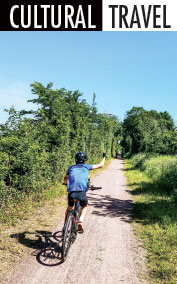 “I love cycling trips because it makes you feel more like a local. You’re close to ground level and smelling things and seeing things, and talking to people, and locals comment ‘where are you from?’” says Mina Goldstein.
“I love cycling trips because it makes you feel more like a local. You’re close to ground level and smelling things and seeing things, and talking to people, and locals comment ‘where are you from?’” says Mina Goldstein.
“Our son Nadav has a personal interest in World War II history,” says Goldstein. He suggested Normandy as a side-trip on their travels. It was the Allies’ June 6, 1944 invasion of Normandy that would pave the way for France’s—and Europe’s—liberation from Nazi Germany.
Once the Goldsteins had decided on their destination, they found a local tour company that would help them to undertake a self-guided tour of the region. A train took them from Paris to Caen, where a guide met them at their hotel with bicycles, road-books, GPS, and tourist information to guide them through the next three days. They selected from different routes and destinations each day, making stops at recommended restaurants and sites.
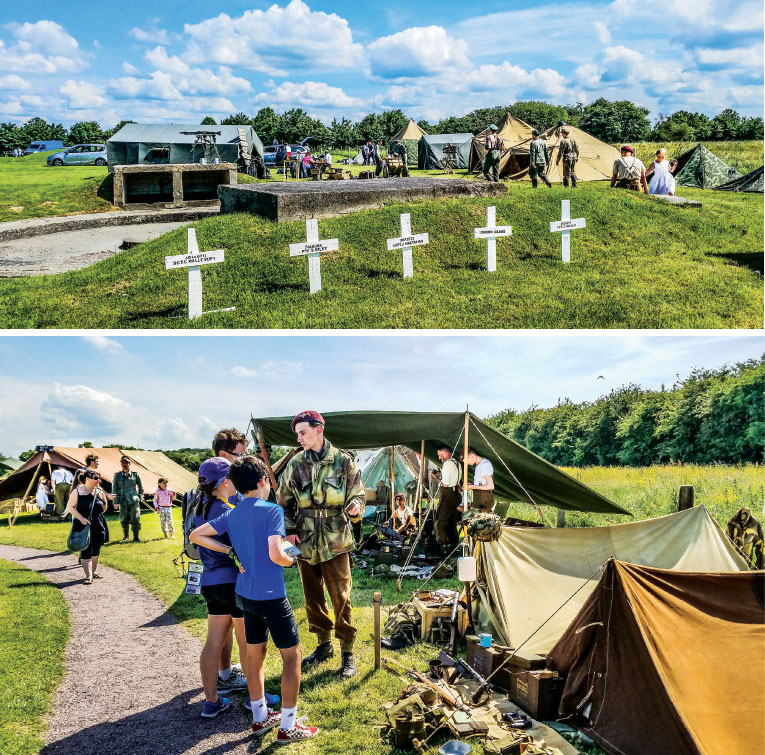
Local French volunteers dressed up in period uniforms and recreated a camp at the Merville Gun Battery, located about 8 miles from the beaches at Normandy. Merville was a fortification built by the Germans to defend against Allied forces and was one of the first places attacked on D-Day.
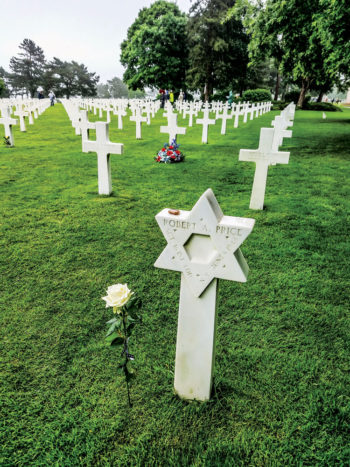
At the Normandy American Cemetery and Memorial in Colleville-sur-Mer, grave markers differ to represent the fallen soldiers’ religious beliefs.
“The company that put it together is what really made a difference; it wasn’t like we just followed the Google Maps cycling directions. They took us on back roads, country roads. I don’t know if you would know which roads to take if you didn’t book a trip like this because it was different from the Google Maps cycling directions. It was very relaxing, and you could go at your own pace and stop for lunch.”
And she is not referring to fast food. The bistros offered relaxing meals, with “mussels, and fresh seafood…and it’s part of their culture to sit and talk and enjoy the food. So we got to be a part of that, which was really nice.”
The Goldsteins’ 100-mile bike tour nearly coincided with the June 6 anniversary of D-day, which meant there was a lot of activity along the way. Foreign tourists were arriving for commemorative ceremonies at Omaha Beach; British veterans had an especially large presence. “I didn’t realize that the Allied invasion was organized by country so that Canadians went to…Juno Beach and Americans got Omaha Beach. The Brits, you know had Gold Beach….So when you cycle through those towns…you can kind of feel that they had a special connection to the particular country that landed there and liberated them…and there was a real sense of ‘we owe everything to the Canadians or you know, we deeply respect the British,”’ says Goldstein.
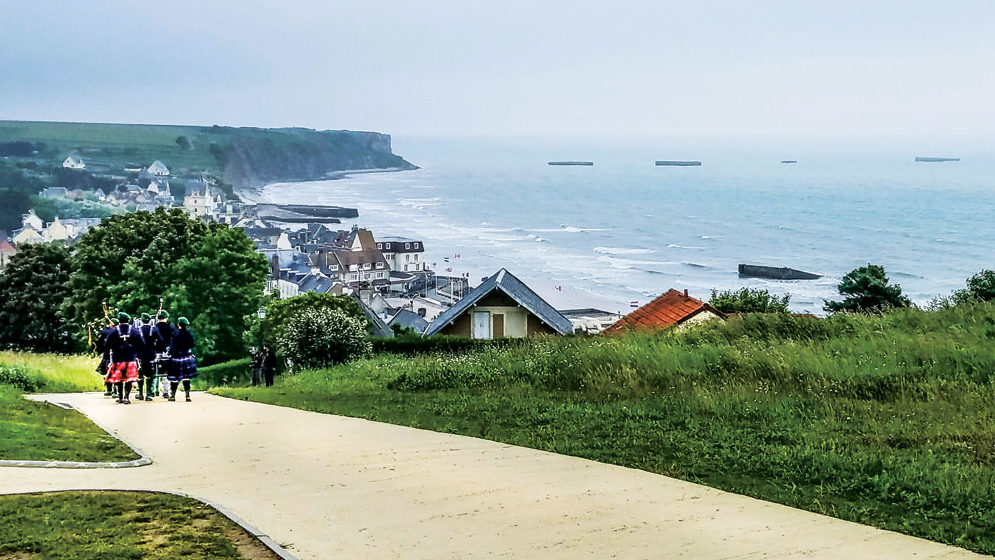
Gold Beach, one of the five D-Day beaches, is located in the town of Arromanches-les-Bains. The Goldsteins ran out of the museum at Arromanche and took the photo when they heard the distinctive sound of bagpipes passing by. The bike trip took them through towns where many of the beaches were landing sites with monuments, flags flying and locals dressed up for D-Day memorial events. The last day, their weather was chilly and rainy, as it had been on June 6, 1944.
That legacy was also apparent in the frequent response they heard when people learned where the family was from: “We love the United States!”
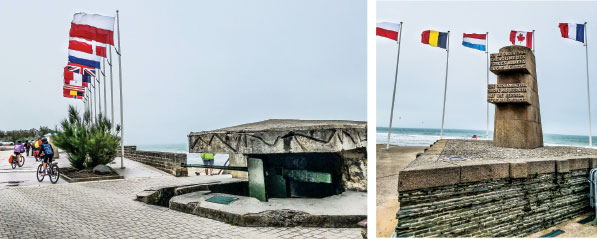
Left photo shows a Nazi bunker. The right monument inscription says: “Here on the 6th June 1944 Europe was liberated by the heroism of the Allied Forces.”
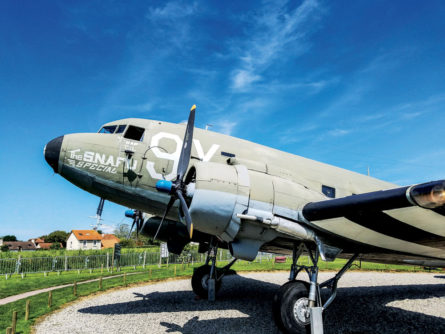
Period aircraft were on display and flew overhead as the family explored and learned about the historic battle at Merville Gun Battery.
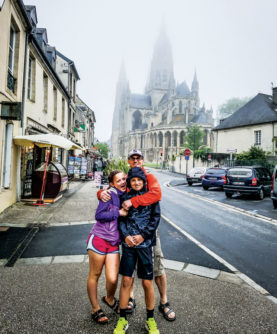
The trip took the family through the narrow streets of Bayeux where they got lost looking for their hotel, which was located on the other side of the town. The famous Bayeux Cathedral, a Roman Catholic church and a national monument, is visible in the background.
The family averaged 30-40 miles of cycling each day, traversing mostly flat landscapes with occasional hills. “To ride by the beach and you could see the bunkers and the fortifications that the Nazis had put in the water as part of their Atlantic wall…for the adults, but also for the kids…history is real…I don’t know how to say it other than that.”
One of the most moving places, says Goldstein, was the American cemetery at Colleveille-sur-Mer, which occupies 172.5 acres and includes the graves of over 9,380 Americans. “It’s staggering to see all those [gravestones] lined up in one place.” Along with the sheer scale of death represented by the rows of headstones, she recalls seeing references to Native American troops along with Jewish and Muslim soldiers who died during the invasion, with some graves marked with the Star of David or the Islamic crescent. “It really felt like all of humanity was involved.”
Photos courtesy of Mina Goldstein



0 Comments